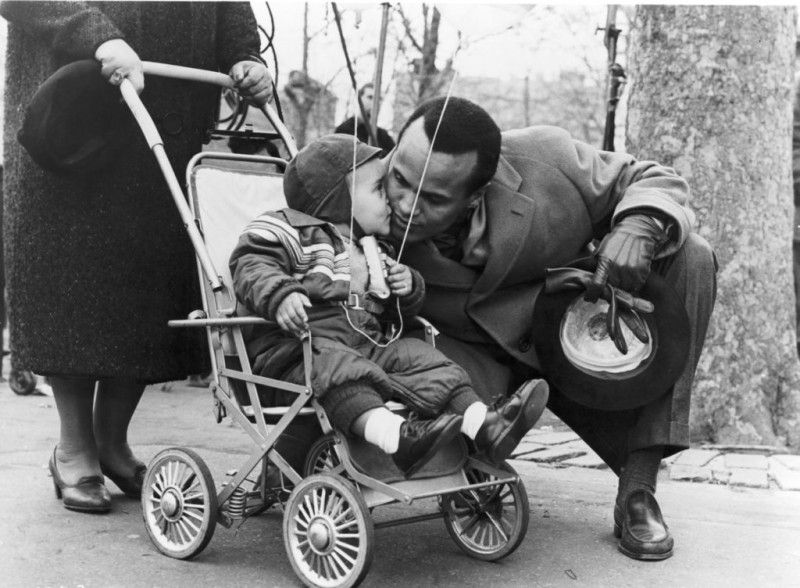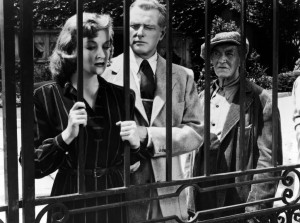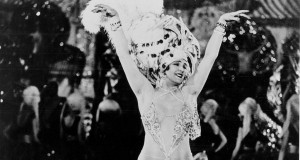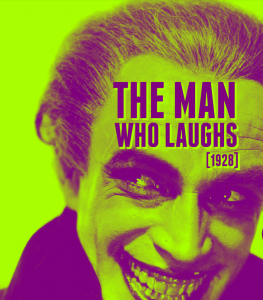‘It’s a Jungle Out There.’ Estella Tincknell

Share this
The fourth film in our 2019 film noir season, Odds Against Tomorrow, is quite possibly the best film noir you have never seen.
If you have seen it you are unusually lucky because it’s a film that has never found its way into the standard noir canon. It rarely features in noir seasons, is not included in much of the scholarly writing on noir, and has largely stayed under the radar despite the frequent revivals of interest in noir. Yet it is difficult to understand why.
It has a distinctive cast, including two stars with a strong track record in crime/noir films (Robert Ryan and Gloria Grahame), a renowned screenwriter in Abraham Polonsky, a gifted if underrated director in Robert Wise, and a fantastic score – which I’ll come back to. It is also a taut, tense thriller with a compelling narrative and characters, and a gripping plot.
The film was the artistic and political project of its main star, Harry Belafonte, whose company, Harbel, produced the film, although it was released by United Artists. This was the first film noir to be produced by an African-American with an African-American protagonist – Belafonte’s character, Johnny. Belafonte also invited Abraham Polonsky, who was at the time a controversial figure due to his vocally expressed left-wing views, to write the screenplay. Because of Polonsky’s own precarious position (he had by then been blacklisted by the House UnAmerican Activities Committee for his communist sympathies) the writing credits were initially given to John Oliver Killens, a black novelist and screenwriter friend of Belafonte. The source was a hard-boiled crime novel by William McGivern, an established thriller writer who went on to script the 1970s TV cop series Kojak (1973-78).
It may be deduced that the film was a consciously political project. Indeed, Belafonte was a prominent figure in the Civil Rights Movement at the time (he still is) as well as being one of the first major black Hollywood film stars, a gifted singer and a charismatic performer. In Odds Against Tomorrow he plays Johnny Ingram – a classic noir moniker incidentally (‘Johnny’ is the film noir everyman caught up in situations beyond his control), a nightclub singer and vibraphone player, whose gambling has lost him his wife and his child and who is desperate to repay his debts to the gangsters who control the club and who are threatening him and his estranged family.
Johnny is the nearest we have to a hero in the film but Belafonte was determined that the character should not be the white man’s negro. As he pointed out, his near contemporary Sidney Poitier was long condemned to roles as the ‘black saviour’ of white folks: a saintly, patient black man bringing peace and understanding between the races. Johnny is no such figure: he’s sharp-suited, slick, quick-tempered, intelligent. He’s also quixotic and mercurial. In some ways the character resembles the white teenage rebels played by Marlon Brando and James Dean during this period of an emergent youth culture in his resistance to established norms. The film certainly incorporates some of the anxieties about juvenile delinquency which were so central to social problem films of the period: carelessly criminal youths hang around Central Park and the bars frequented by the main characters, their intrusive and noisy presence marking a powerful contrast with the downbeat behaviour of the three main protagonists. However, while these encounters foreground the generational difference between the racist Southern ex-con Earl Slater (Robert Ryan), they are less clearly configured when it comes to Belafonte’s Johnny, whose cultural disposition is perhaps closer to that of the youths than it is to his partners in crime.
Having said that, it is clear that it was Belafonte’s commitment to a particular take on what is basically a story about petty criminals committing a relatively small-scale crime that ensured Odds Against Tomorrow would be a film about race and what was at the time called ‘race relations’. The film even stages the racist myth that one black man looks pretty much like another by making this device central to the bank heist which is the main plot strand.
And it makes its liberal anti-racist politics plain from the opening scenes. The film opens with Ryan as the embittered ex-con Slater, whose smile conceals malice, battling his way along a bleak New York City street towards his appointment with Ed Begley’s Burke, the corrupt ex-cop who has a plan for ‘one last job’: a bank heist in a small town in upstate New York – Melton – that will supposedly solve all their financial problems. Ryan is surrounded by mischievous, laughing kids scurrying along the street and he stops to pick up one of them – a little black girl – ostensibly benignly. But then he calls her a ‘piccanniny’ – a term replete with racist connotations – and immediately we know. Earl is a man who is only comfortable with black people when they are infantilised. When they don’t speak ‘out of turn’ as the black elevator conductor in Burke’s apartment block does when he tries to engage Earl in conversation minutes later. Earl coldly refuses to engage as he also does when he is introduced to Johnny and fails to take the latter’s outstretched hand. The terms are set. As we later see, Earl’s racism sours the relationship between the three would-be bank robbers and this ultimately leads to tragedy.
Yet despite this strong mix of noir narrative and politics, the film’s director, Robert Wise, is hardly known for his work in the crime genre. In fact, his reputation is as a highly successful studio director largely seen as a craftsman rather than an auteur. Remarkably, however, he also helmed two Hollywood classics which could hardly be more different in tone and style to each other and to Odds Against Tomorrow: the wonderfully atmospheric black and white psychological horror film The Haunting (1963), and the all-colour, lavish and tooth-achingly sweet musical The Sound of Music (1965). Here, Wise turns his hand to very different subject matter; his eye for visual framing is, however, a constant. One thing that Odds Against Tomorrow shares with The Sound of Music and with The Haunting is a stunning opening sequence, partly created through the striking negative silhouette images of swirling leaves along a gutter which later segue into the scene featuring Ryan discussed above.
The film is a late entry into the noir canon – 1959 – which may be one reason why it hasn’t been seen as part of the ‘classic’ cycle which, arguably, ‘starts’ with Stranger on the Third Floor in 1937 and ‘ends’ with Orson Welles’ Touch of Evil in 1958. Yet its source is firmly noir – a hard-boiled crime story about a heist conducted by three desperate men down on their luck – and its crisp black and white photography and expressionist tendencies place it firmly within the noir category. Its tone and atmosphere of seediness, mutual exploitation and suspicion are also recognisably noirish, as is its milieu of the city at night: bars, clubs, all-night diners, glitzy spaces of ostensible glamour haunted by the losers, mobsters, the outcast and the hunted. Sadly, its treatment of female characters, who are firmly divided between vice and virtue, is also typical of the genre. Shelley Winters is brilliant as the gangster’s moll, Lorry, a glamour girl gone to seed who loves and fears Ryan’s Earl. But Gloria Grahame is under-used as the wasted, would-be-seductress who lives next door and whose out of focus stare betrays her self-alienation. As with all of Grahame’s noir women, she’s an abject figure. But the focus on the white women leaves black female characters in relatively dull and underwritten roles as good mothers and tempting night club hostesses. Again, these are stock figures in the noir universe, present as narrative motivation for the men’s actions (Ryan’s character cannot bear his economic dependence on Lorry, Belafonte’s Johnny wants to secure his child’s future) and abandoned by the time we get to the latter part of the story.
Crucially, the spare cinematography captures a wintry New York cityscape that underlines the bleakness of the scenario. We see a barren Central Park, a stark midtown New York skyline, winter streets bereft of cheer. As well as deploying the more conventional visual tropes of film noir, such as the low-angled and high-angled shots and ‘Dutch tilts’ that express the power dynamics and off-kilter morals of the city’s nighttime economy, Wise used infra-red film stock to achieve the stark, black against grey and white palette of the film – and it works beautifully.
So, a bleak urban landscape. Apart from the children that is, whose voices puncture the opening sequence with chatter – like a flock of starlings, a metaphor taken up visually – and whose constant presence throughout the first part of the film (on the streets, at the fairground Johnny takes his daughter to) is an oddly cheerful reminder of hope, and of the family ties Johnny is desperate to hold on to.
The film’s visual and aural soundscapes are, then, two of its pleasures. The story’s bleak urban mise-en-scene and focus on the seedy underbelly of city life is underlined by some flashy zooms and crane shots, characteristic of its period but also powerfully effective. And the sound design is as powerful as the photography. It offers a frequently ominous and threatening audio universe from the booming roars of the animals in the Central Park Zoo (heard rather than seen) to the sounds of continuous, mechanised movement that punctuate the latter part of the film: trains, cars, trucks, whistles, grinding engines, signals. And this also underlines the film’s second theme of ‘big city’ violence and corruption penetrating small-town America as the contrast between the easy anonymity of New York City and the apparently neighbourly Melton (where the local cop knows most people by sight) is emphasised. Its atmosphere is reminiscent of another noir made just two years earlier, Alexander Mackendrick’s Sweet Smell of Success (1957), which also has a powerful modern jazz score (here by Elmer Bernstein) and which similarly expresses the genre’s focus on day v night, outward respectability v inner corruption. As in that film, Odds Against Tomorrow depicts crime as a nighttime activity, undertaken in a time/space where children are notably absent and conventional morality forgotten.
Finally I therefore want to return to the film’s excellent music score. It was composed by John Lewis, a major figure in modern jazz during the 1950s and 60s – he founded the Modern Jazz Quartet – and a talented pianist and composer. Lewis not only worked with Dizzy Gillespie and Miles Davis, he played on the legendary Birth of the Cool album and was a key figure in jazz education until his death in 2001. For Odds Against Tomorrow Lewis gives us a score that captures the anomie of the modern city with its transient encounters and screeching sirens.
Jazz has long been used to signify social and sexual transgression and the nighttime city in cinema: the horns become sirens of sex and crime, the music of night not day, of leisure not work, of criminality not respectability. The music genre’s use in late noir is also well established. Equally important is the way noir frequently incorporates both a conventional non-diegetic score and diegetic performance into the musical evocation of the city as transgressive space, thus establishing a complicit relationship between characters and viewers concerning their shared moral universe (Lauren Bacall performing ‘And Her Tears Flowed Like Wine’ in The Big Sleep, 1946, is one example). In Odds Against Tomorrow Belafonte’s Johnny showcases his talents in a nightclub scene replete with tension and anger. Aggressively accompanying himself on the vibraphone by angrily pounding its keys, he sings ‘All Men Are Evil’. The song is initially performed by Mae Barnes and the lyrics are reminiscent of a blues standard with their warning to women to stay away from men. But, in an extraordinary sequence, Johnny repeatedly interrupts Barnes and effectively takes the song from her, hitting the vibraphone so hard that her voice is drowned out. Crucially, he adds the lyric ‘it’s a jungle out there’ and repeats it over and over. While this phrase may be in some ways trite and is certainly a regular trope within the noir canon with its references to the ‘urban jungle’ where survival is at stake, here the additional connotations of the city as a place of animal savagery are foregrounded. Not only have we heard the eerie baying and roaring of the zoo animals we will also see Johnny pull a gun on the mobster threatening his family and Slater brutally punching a young serviceman in a bar who has been showing off to his girlfriend. Furthermore, the historical racist association of black men with animality in a film which has already established its anti-racist message makes the song’s phrases and Belafonte’s furious performance even more discomforting. If the city is a jungle who or what is Johnny?
The film’s emphasis on conflict and tension is then intensified by Lewis’ determinedly modernist style of composition, which utilises few instruments and emphasises a spare formalism. The use of dissonantly configured horns over crane shots of freeways and industrial wasteland helps to capture the film’s atmosphere of urban alienation, while the vibraphone’s curiously resonant yet ‘hard’ sound offers an eerie, high pitched evocation of modern life. The opening theme played over the credits expresses the tension, uncertainty, suspense and potential violence of the city. It sets up what will unfold – and gives us an arresting introduction to a remarkable and under-appreciated film.


